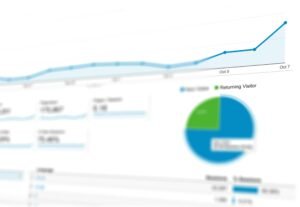Summary
- When starting SEO, always track your performance using tools like Google Analytics 4 and Google Search Console. These are free and essential.
- Track total number of pages optimized, new pages created for SEO, outreach emails sent, and the number of backlinks acquired.
- Leading indicators are key actions today that will affect future outcomes. Focus on them for better long-term results.
- Run a Screaming Frog crawl to gather essential data for website analysis.
- Ensure your website is crawlable and indexable by verifying it doesn’t have ‘no index’ tags.
- Make sure your website is mobile-friendly and loads quickly. Use tools like PageSpeed Insights to check loading speed.
- Have an SSL certificate and ensure it’s properly configured.
- Your website design should be modern and updated. An outdated design can lead to mistrust and poor user signals.
- Avoid using aggressive pop-ups and ad placements that disrupt the user experience. This can hurt your SEO performance.
- Include trust pages like Privacy Policy, Terms of Service, and Contact Page to improve trustworthiness.
- Have detailed author bios on your site to establish credibility and authority.
- Fix any pages with backlinks that are not indexed by using 301 redirects.
- Trim website bloat by removing pages with no traffic, impressions, or backlinks. Options include deletion, redirection, or consolidation.
- Avoid bloated pages with excessive word counts. Aim for concise, focused content.
- Address thin content on your site by checking word counts and ensuring they are sufficient.
- Regularly update your content to keep it relevant and fresh.
- Ensure every page has one title tag and one H1 tag.
- Use tools like Grammarly to ensure your content is free from spelling and grammar errors.
- Leverage pages with backlinks but no traffic by updating or redirecting them to relevant pages.
- Fix any 404 pages that have backlinks by using 301 redirects.
- Ensure no page is more than three clicks deep into your site’s architecture for optimal crawlability.
- Optimize internal linking. Ensure pages have sufficient internal links and targeted anchor text.
- Use heatmap and user tracking software like Mouseflow to understand user behavior and optimize your website accordingly.
- Use correct schema markup for your pages to enhance search presence and click-through rates.
- Avoid keyword cannibalization by ensuring no two pages target the same keyword.
- Ensure your page has at least five internal links and optimize for relevant and diverse anchor text.
- Ensure your content is readable, scannable, and engaging. Use short paragraphs, headings, images, and videos.
- Your content should add unique value, be accurate, and be reviewed or verified by subject matter experts.
- Product reviews and affiliate content should demonstrate firsthand experience and provide visual proof like photos or videos.
- For commercial pages, optimize for goal completions and have clear CTAs (calls to action).
- Regularly update your SEO strategy and content to adapt to the latest trends and best practices.
Video
How To Take Action
Implementation Strategies for Small Businesses, Entrepreneurs, and Personal Growth Enthusiasts
I would suggest implementing these strategies to get the most out of your SEO efforts:
Start Tracking SEO Performance:
- Set Up Free Tools: First things first, you need to track your performance. Install Google Analytics 4 and Google Search Console. These tools give you essential data without costing a dime.
- Monitor Key Indicators: Keep an eye on the number of pages optimized, new pages created for SEO, outreach emails sent, and backlinks acquired. These are your leading indicators that guide your future success.
Optimize Your Website:
- Screaming Frog Crawl: Use Screaming Frog to crawl your site for a detailed audit. Connect it with GA4, Google Search Console, and PageSpeed Insights to gather comprehensive data.
- Make Site Mobile-Friendly: Check your website’s mobile-friendliness and loading speed using PageSpeed Insights. A fast, mobile-friendly site greatly enhances user experience.
- Ensure SSL and Modern Design: Confirm your site has an SSL certificate and a modern look. These build trust and ensure user safety.
- Avoid Aggressive Popups and Ads: Keep user experience smooth by avoiding disruptive popups and excessive ads. These can negatively impact your SEO performance.
Content Optimization:
- Regular Updates: Always update your content to keep it fresh and relevant. Google loves updated content, and it helps keep your audience engaged.
- Streamline Content: Remove or consolidate pages with no traffic or value. Focus on quality rather than quantity.
- Readable and Error-Free: Use tools like Grammarly to ensure your content is free of spelling and grammar errors. Break up text with headings, images, and videos to make it easy to read.
Internal and External Linking:
- Effective Internal Linking: Make sure your internal links are well-distributed and use diverse anchor text. Ensure no pages are more than three clicks deep.
- Leverage Backlinks: Regularly check for pages with backlinks but no traffic. Update or redirect them to relevant, high-value pages.
Trust and Authority:
- Add Trust Indicators: Include pages like Privacy Policy, Terms of Service, and detailed author bios. These improve your site’s trustworthiness.
- Avoid Thin Content: Ensure each page has sufficient, relevant content. Trim down bloated pages that are unnecessarily long.
Behavior Tracking:
- User Behavior: Use tools like Mouseflow to understand user behavior. Heatmaps and session recordings can give you insights to optimize your site further.
By implementing these strategies, you’ll create a strong foundation for your SEO efforts, ensuring your website is optimized, user-friendly, and primed for growth.
Quotes by Wiki Wayne
“Are you tracking SEO performance”
– Wiki Wayne
“Are you tracking the right SEO kpis”
– Wiki Wayne
“Is your website mobile friendly”
– Wiki Wayne
“Does your website load fast”
– Wiki Wayne
“Do you have an SSL certificate and is it properly working”
– Wiki Wayne




